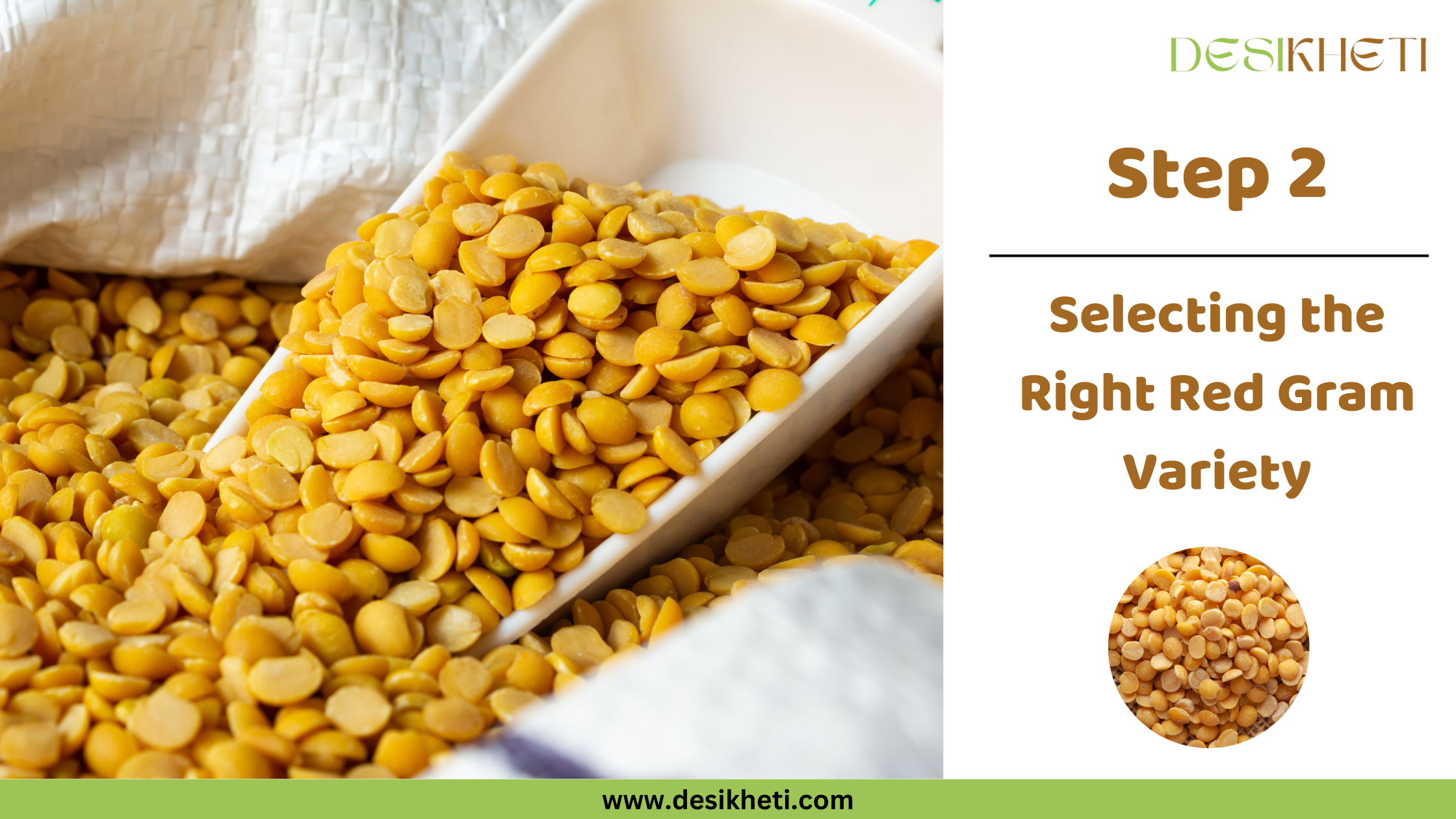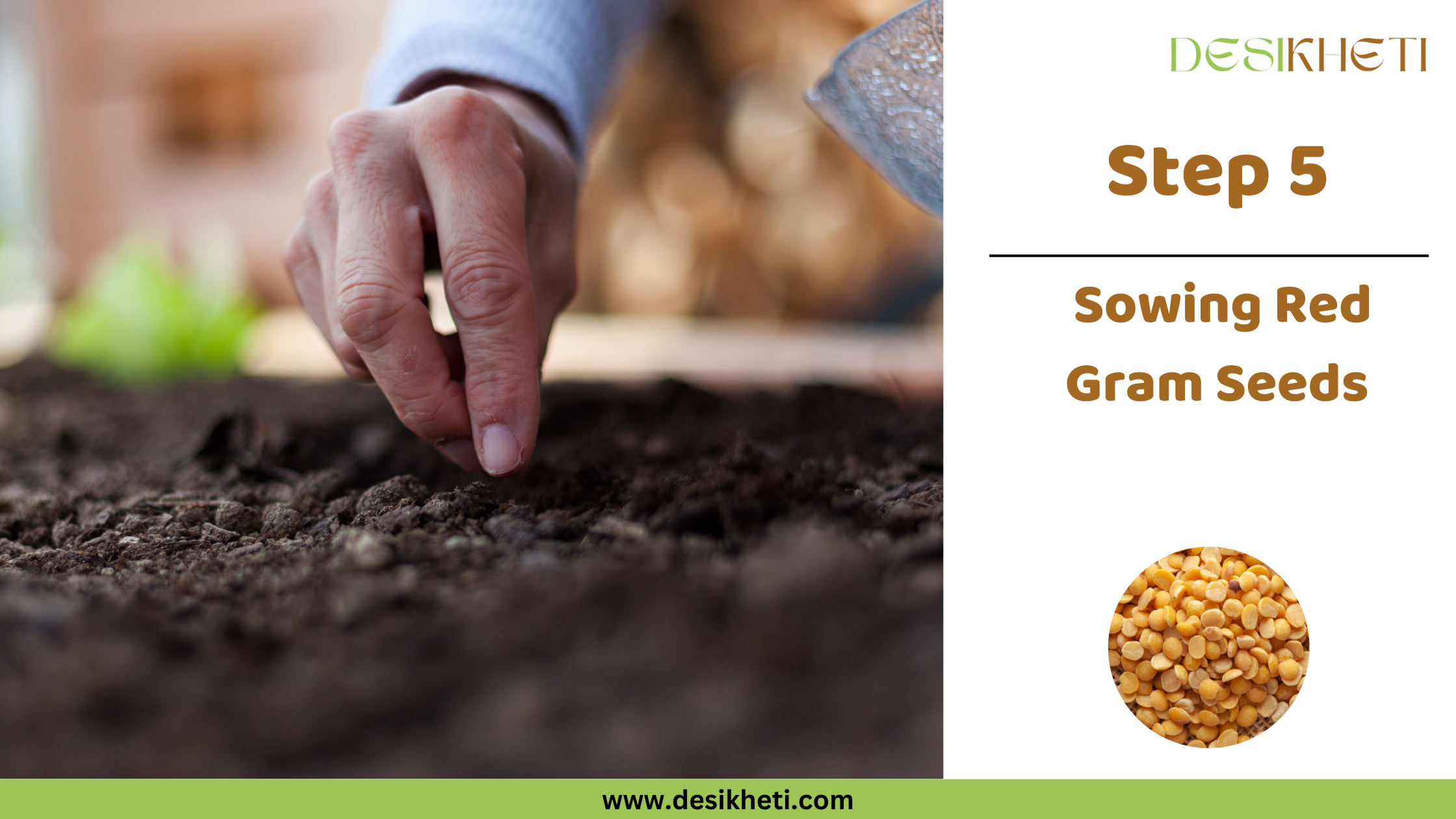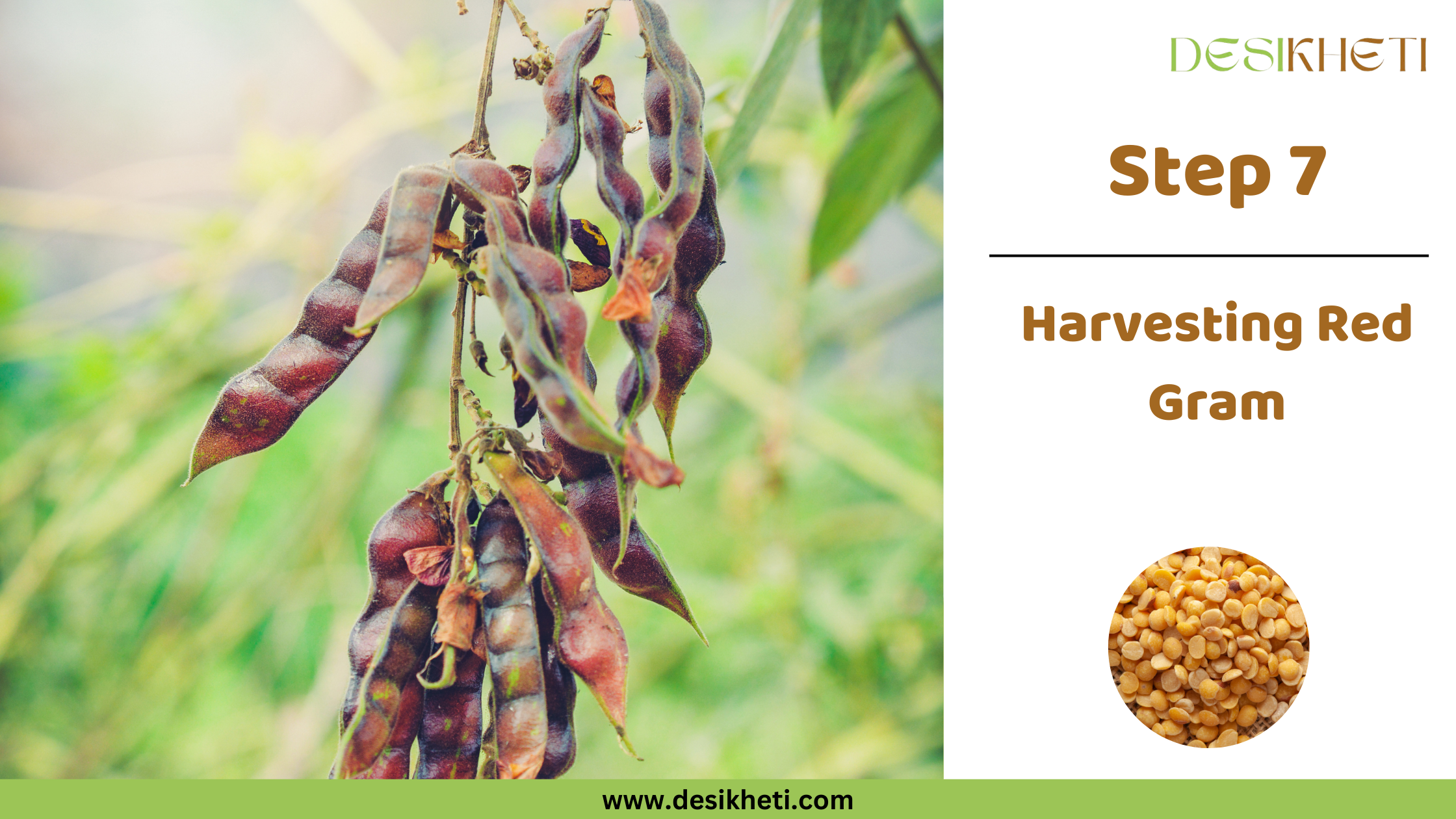Table of Contents
Introduction
Want to grow a healthy and high-yielding red gram (pigeon pea) crop? This nutrient-rich pulse is widely cultivated in India due to its drought tolerance and adaptability to various climates. Beyond its role as a protein-rich food, red gram also enhances soil fertility by fixing nitrogen from the atmosphere. However, optimal yield depends on the right sowing techniques, soil preparation, and crop management.
In this guide, we’ll walk you through seven simple steps to successfully sow red gram seeds covering everything from variety selection to seed treatment, soil preparation, and nutrient management. Follow these steps to maximize your harvest and make your red gram farming journey a success!

Step 1: Climate, Soil, and Season for Sowing Red Gram Seeds

Climate for Red Gram Cultivation
Red gram is grown in tropical and subtropical regions. For optimal growth, it requires a warm and moist climate during its vegetative phase, followed by a cool and dry period during flowering and pod formation. Cloudy weather and excessive rainfall at the flowering stage can significantly reduce yields.
A temperature range of 25–30°C and annual rainfall of 600–800 mm can support healthy crop growth. While red gram can withstand high temperatures, it is sensitive to frost. It is also a drought-tolerant crop, making it suitable for regions with limited water availability.
Soil for Red Gram Cultivation
Red gram can grow in almost all soil types. However, it performs best in fertile, well-drained loamy soils. The optimal soil pH ranges from 6.5 to 7.5. Saline, alkaline, or waterlogged soils are not suitable for the crop.
Season for Red Gram Cultivation
Red gram is grown in both Kharif and Rabi seasons. In the Kharif season, seeds are sown between June and July, while in the Rabi season, sowing takes place between September and October. The sowing time may vary based on the variety’s duration and the region’s rainfall pattern. To achieve better yields, plan sowing in a way that flowering and pod formation do not coincide with heavy rainfall, as excessive moisture during these stages can affect productivity.
Step 2: Selecting the Right Red Gram Variety

Various factors such as the season of sowing, region, time to maturity, and tolerance to diseases need to be considered when selecting a variety. For example, in the Kharif season, early and extra-early varieties may not be suitable, as the rains coincide with flowering and pod formation. Generally, medium-duration varieties are preferred for Kharif cultivation.
For your convenience, a few red gram varieties are listed below.
Step 3: Procuring Quality Red Gram Seeds

For successful red gram farming, selecting high-quality seeds is essential. Even with the best cultivation practices, using poor-quality seeds can lead to low yields and weak plant health. Looking for the best red gram seeds? DesiKheti offers a wide range of premium red gram seeds tailored to your farming needs. Browse our collection, place your order online, and enjoy fast, reliable delivery right to your doorstep.
Step 4: Land Preparation for Sowing Red Gram Seeds

Plough the land 2 to 3 times, followed by harrowing. This helps in removing previous crop residues and weeds. Apply 5 to 10 tonnes of FYM per hectare during the final ploughing. Ensuring the soil is loose and well-drained can support strong root development. Around 5 kg of biofertilizers and 2 kg each of Trichoderma and Pseudomonas can be mixed with FYM and applied. Mix the biofertilizers with FYM and apply them to the main field after five days.
Apply 20 to 40 kg of nitrogen, 50 kg of phosphorus, and 20 kg of potassium per hectare. However, the exact fertilizer dose may vary based on soil fertility, region, and season. Fertilizers can be applied as a basal dose.
Ridges and furrows may be prepared one day before sowing red gram.

Step 5: Sowing Red Gram Seeds

Seed Rate: The recommended seed rate is 2 to 4 kg per acre. However, the exact quantity may vary depending on spacing, sowing method, season, etc.
Seed Treatment: Seeds sold by private companies are generally pre-treated with chemicals. However, if the seeds are not pre-treated, they can be treated with fungicides such as Bavistin (1 g/kg seed), Captan, or Thiram (2.5 g/kg seed) before sowing.
Sowing Method
Red gram seeds can be sown behind the plough or using a seed drill.Sow the seeds at a depth of 7 to 10 cm.
The ideal plant population depends on several factors, including sowing season, soil fertility, rainfall pattern, and variety. In Kharif, fewer plants are prefered due to larger canopy growth, while Rabi crops can accommodate a denser population. Fertile soils support more plants, whereas in low-fertility areas, wider spacing is recommended. Similarly, regions with well-distributed rainfall can maintain a higher plant density, while drought-prone areas with low plant density are preferred. Additionally, low-branching varieties require higher plant populations, while long-duration varieties need more space due to extensive canopy development.
For short-duration varieties, a spacing of 60 × 10 cm is preferred, while for medium- and long-duration varieties, a spacing of 75 × 20 cm is preferred.
Step 6: Care After Sowing Red Gram Seeds

Water Management:
In the Rabi season, irrigation needs to be given immediately after sowing, followed by a second irrigation on the third day after sowing. Flower initiation and pod filling are critical stages for water requirements, and irrigation needs to be given during this period. Red gram sown in the Kharif season may not require regular irrigation if there is frequent rainfall. Maintaining adequate soil moisture is important, and irrigation needs to be done only if needed. Waterlogging should be avoided at all stages of plant growth.
Weed Management:
During the first 6–8 weeks, red gram grows slowly, making it vulnerable to weed competition. Conducting two harrowings during this period can help keep weeds under control.
Step 7: Harvesting Red Gram

Red gram has an indeterminate growth habit, meaning flowering, unripe pods, and mature pods can be present on the plant at the same time. Harvesting can be done in 2–3 pickings. However, red gram plants are usually cut when 75–80% of the pods turn brown and dry. The cut plants are then bundled and dried for about a week to allow post-harvest ripening of unripe pods. Once dried, the pods can be beaten with sticks to separate the seeds.

Common FAQs Related to Red Gram Seed Sowing
Q. What climate is best for growing Red Gram?
A. A temperature range of 25–30°C and annual rainfall of 600–800 mm are suitable for healthy red gram growth. A warm and moist climate during its vegetative phase, followed by a cool and dry period during flowering and pod formation, is ideal.
Q. Which soil is best for growing Red Gram?
A. Red gram can grow in various soil types but performs best in fertile, well-drained loamy soils with a pH between 6.5 and 7.5. Saline, alkaline, or waterlogged soils may not be suitable.
Q. What is the seed rate of Red Gram per acre?
A. The seed rate of red gram varies depending on spacing, sowing method, and season. Generally, 2 to 4 kg of seeds per acre can be used.
Q. How deep can Red Gram be sown?
A. Red gram seeds can be sown at a depth of 7 to 10 cm.
Q. What is the scientific name of Red Gram?
A. The scientific name of red gram is Cajanus cajan.

Join DesiKheti Whatsapp Channel for regular updates, farming tips, and information on agriculture.
